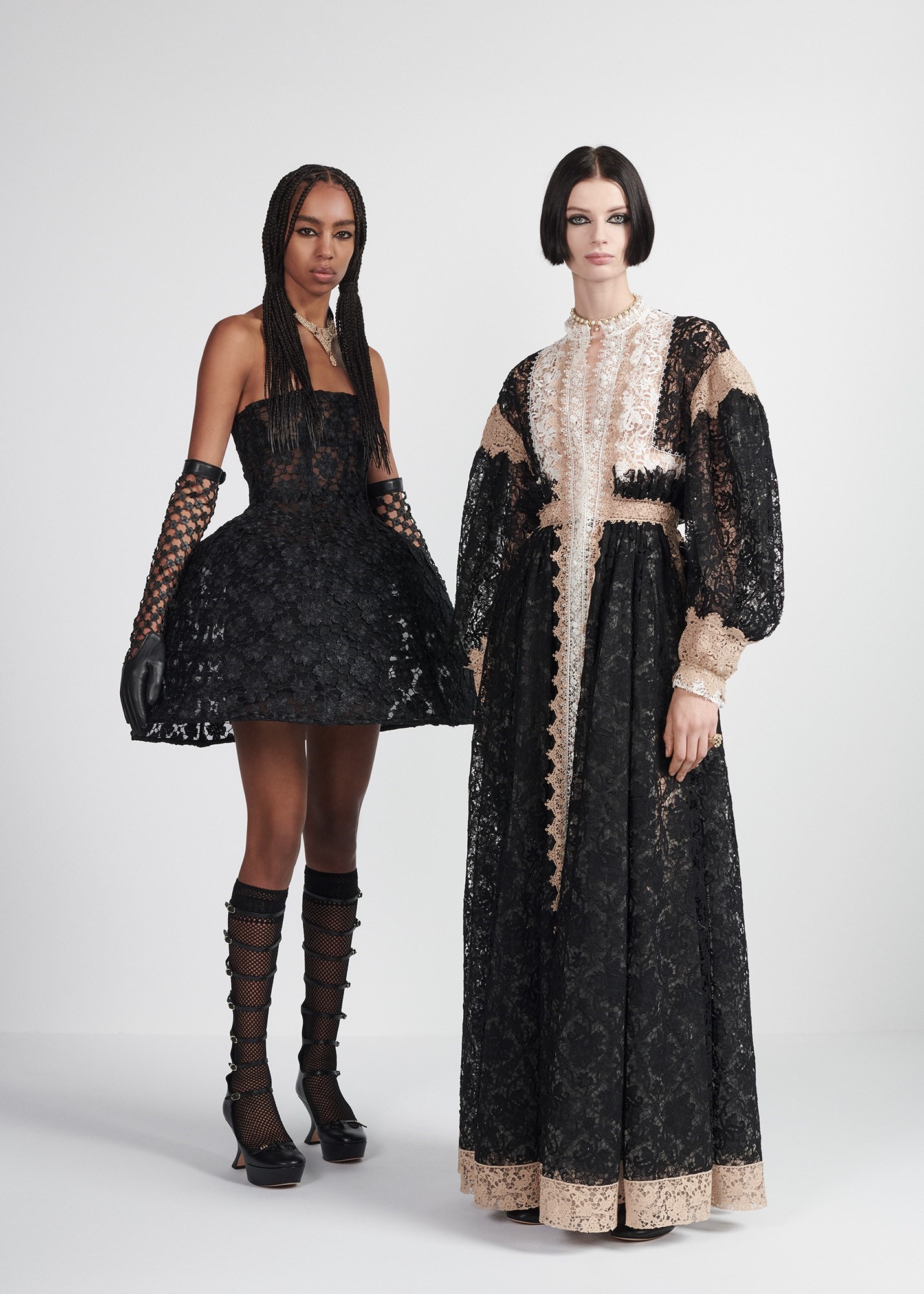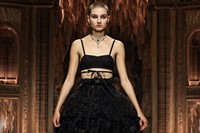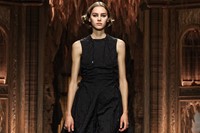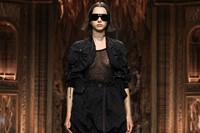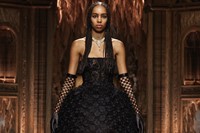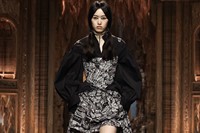The most powerful woman of the 16th century was not, as many may posit, Elizabeth I but her French counterpart, Catherine de’ Medici, wife of Henry II, a Florentine noblewoman who married into French royalty and wound up ruling the whole thing as Queen Regent, exercising political influence right up until her death in 1589. Some called her Machiavellian, others have said that she simply sought to keep her family and specifically her children in power at all costs, believing it to be the best for France. What is undoubtedly true, however, is that she chose to express her power through her fashion. And that is what attracted Maria Grazia Chiuri to her, for her Spring/Summer 2023 Dior show.
There’s a connection, of course, in that both are Italian women welding their power on French soil. There’s also something of a connection between the silhouettes of de’ Medici’s court and the trademark styles of Dior – the designer Vivienne Westwood once cited the 16th century as the source of inspiration for Dior’s silhouettes, and certainly, his sweeping petticoats and wasped waists find an echo in the stays and farthingales of the mid-1500s. De’ Medici, however, exercised her power through unusual additions to her wardrobe – such as high-heeled shoes, which some say she invented. Possibly apocryphally, those shoes were intended to elevate her stature to stand up – literally – to her husband’s mistress, Diane de Poitiers. And following Henry II’s death, while she took to mourning and became known as the ‘Black Queen’, her attire was sartorial double-speak – black wasn’t only a colour of sombre grief, but also a costly dye, and a reflection of status. “Black was a power colour,” says Chiuri. “You could recognise her in a crowd.”
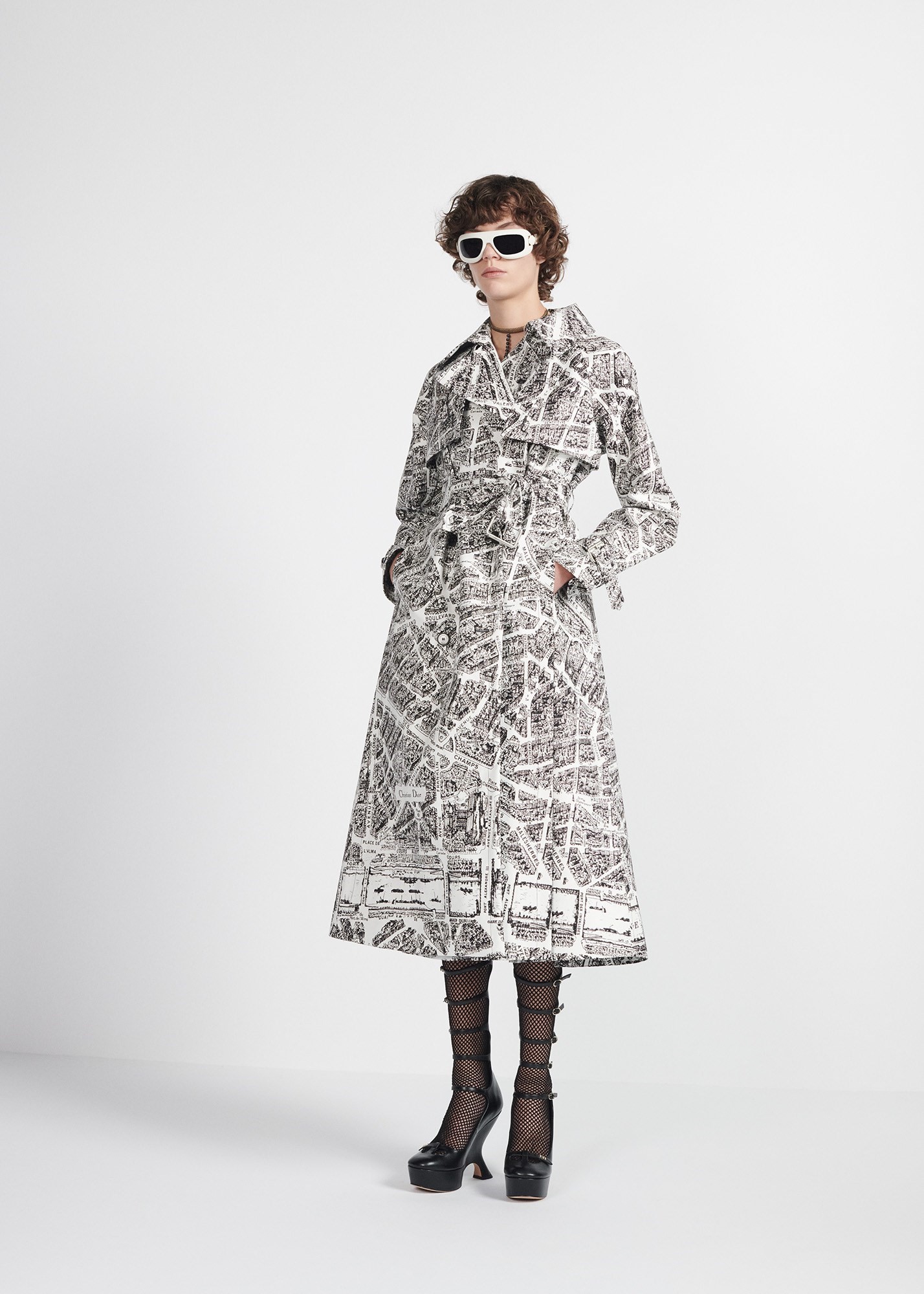
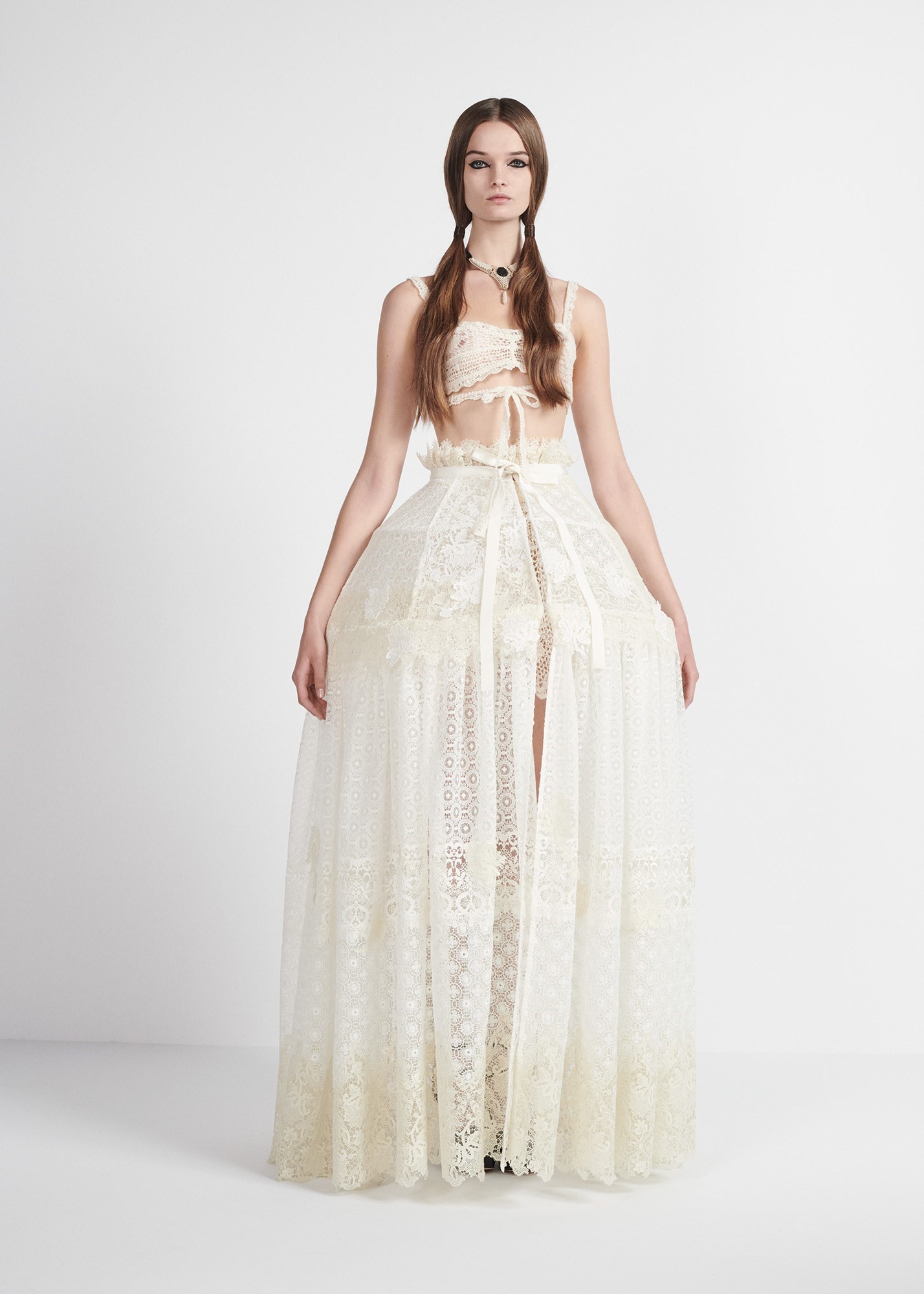
So all those aspects inspired Chiuri’s homage to de’ Medici, and to the notion of power dressing through a historical sphere. The show itself even took place mere metres from the location of the Palace de Tuileries, which was destroyed by the riots of the Paris Commune in 1871. De’ Medici’s heritage was rich – an accomplished needlewoman, she invented an embroidery, a geometric, intricately-worked style named the ‘punto madama’ which, of course, Chiuri used in her clothes. Her platform shoes emerged too, as did takes on the metal corsets she was credited with introducing, but actually is perhaps only responsible for popularising. Those formidable garments, resembling torture devices to modern eyes, funnel the body into a cone shape rather than cinching into a curved hourglass, silhouettes characteristic of the period. But here, Chiuri liberated them, showing them over T-shirt and shirts, atop matching wide-legged trousers, reclaimed and resignified as powerful and provocative garb for modern women.
Generally, that was the mood – to take the unexpected raiments of court dress of the distant past, and to re-energise and reinvigorate them with a mood of the now. Hood skirts were abbreviated, or lightened to bounce with the models’ rapid pace; rich lace, once worth more by weight than gold, is crafted into dresses with an easy air; a courtly wide skirt may be topped with a simple jersey tank, which could, in turn, be tugged down into a chemise dress, like underwear of the past. Even Dior’s Bar jacket is casualified, with drawstrings puckering its silhouette. Dior’s New Look was itself the opposite of its namesake, drawing its influence from various periods of history, many forgotten. There was the same feeling here - of Chiuri unearthing the overlooked and unknown, and of hurrahing an unusual, unexpected feminine heroine.
In the sequence of Chiuri’s work, in her embracing of female empowerment and suffrage of various origins, this collection makes total sense. Her first collection declared we should all be feminists – and, here, she brings to light an early woman of power, who wielded true political influence as the only ruling queen of France. Her statements of power through cloth still have resonance almost 500 years later.
